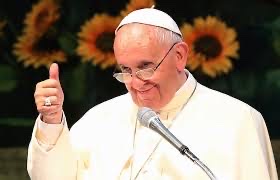The Mass - Meal and Sacrifice - The Eucharist as the Body and Blood of Christ - PART 3
PART 3 - THE PLOT THICKENS - THE EUCHARIST AS THE BODY AND BLOOD OF CHRIST
“The Real Presence of Christ in the Eucharist is a mystery of Faith”
(Sent Certa)
“If anyone denies that in the Sacrament of the most Holy Eucharist are contained truly, really, and substantially the body and blood together with the soul and divinity of our Lord Jesus Christ, and consequently the whole Christ, but says that He is in it only as a sing, or figure or force, let him be anathema” (Council of Trent, session 13, can. 1)
By the end of the first century, Christians were beginning to relate the presence of Christ in the Lord’s supper directly to the bread and wine that were used in the ritual meal. The development of Eucharistic doctrine was gradual. In the patristic period (100 - 450) there was remarkably little in the way of controversy on the subject, but the emphases were different in different parts of the Church. That the Eucharist conveyed to the believer the Body and Blood of Christ was universally accepted from the beginning, and language was commonly used which referred to the Eucharistic elements themselves as the Body and Blood. Even where the elements were spoken of as ‘symbols’, there was no intention of denying the reality of the Real Presence (the Body and Blood of Jesus), in the gifts. Around the 4th century, two different view started to emerge. Some theologians wrote as if they believed in the persistence of the bread and wine after consecration, and others wrote as though they held them to be no longer there. These two points of view were the precursors to transubstantiation (the bread and wine is no longer present), and consubstantiation (the bread and wine is still present along with the body and blood.
The Real Presence was strongly defended by the Church Fathers St. ignatius of Antioch wrote:
“I have no taste for corruptible food nor for the pleasures of this life. I desire the bread of God, which is the flesh of Jesus Christ, who was the seed of David; and for drink I desire his blood, which is love incorruptible [Letter to the Romans 7 (c. A.D. 110)]
St. Cyril of Jerusalem taught:
“As the bread and wine of the Eucharist before the invocation of the Trinity, which is whole and worthy of adoration, were simple bread and wine, after the invocation the bread becomes the body of Christ, and the wine the blood of Christ” [Catechetical Lectures 19:7 (c. A.D. 350)]
St. Ambrose of Milan said:
“Perhaps you may be saying, “I see something else; how can you assure me that I am receiving the Body of Christ?” It only remains for us to prove it. And how many are the examples we might use!…Christ is in that sacrment, because it is the body of Christ: [The Mysteries 9:50-58 (c. A.D. 390)].
St. Augustine had these words of wisdom to new Christians:
“I promised you [new Christians], who have now been baptized, a sermon in which I would explain the sacrament of the Lord’s table…The bread you see on the altar, having been sanctified by toe word of God, is the body of Christ. The chalice, or rather, what is in the chalice, having been sanctified by the word of God, is the blood of Christ.” [Sermons 227 (c. A.D. 411)]
Later, as the earlier conception of a ‘symbol’ as that which conveys and is what it represents gave way to the understanding of it as being other than what it represents, the description of the bread and wine as symbols dropped out or was denied. But hardly anywhere is there any attempt at precise formulation.
The first controversies on the nature of the Eucharistic Presence date from the early Middle Ages (500 - 1500). These controversies had the effect of making some more precise definitions desirable. The Fourth Lateran Council (1215) used the current term ‘transubstantiation’ to assert the Real Presence. Later in the century this teaching was worked out in much detail, with the assistance of the philosophy of Aristotle, which was used by St. Thomas. Aquinas. It was. Maintained that the consecration effected a change in the ‘substance’ of the Bread and Wine, whereas the ‘accidents’ (i.e., the outward appearance) remained. Concurrently with this development went a great increase in Eucharistic devotion and the institution of Urban IV (1261 - 1264), and the Feast of Corpus Christi (1264).
During the Reformation, great controversies on the subject took place. Martin Luther defended the doctrine of consubstantiation, according to which after the consecration both the bread and wine and the Body and Blood of Christ coexisted. Ulrich Zwingli, on the other hand, affirmed that the Lord’s Supper was primarily a memorial rite, and that there was no change in the elements whatsoever. It was this deep rooted divergence of Eucharistic belief that prevented the union of forces of the German and Swiss Reformers. John Calvin held a view of the Eucharist that was intermediate between these two. He denied that any change in the elements took place, but maintained that the faithful received the power or virtue of the Body and Blood of Christ, a doctrine which became known as virtualize; and this or a very similar doctrine was held by some of the Anglican Reformers.
At the Council of Trent (Oct 1551), the doctrine of transubstantiation was reaffirmed in language more explicit than in 1215, but care was taken to avoid any formal definition of it in terms of accidents and substance, despite the general acceptance of this explanation among the leading Roman Catholic Theologians of the time.


Comments
Post a Comment